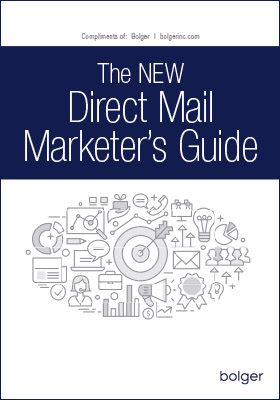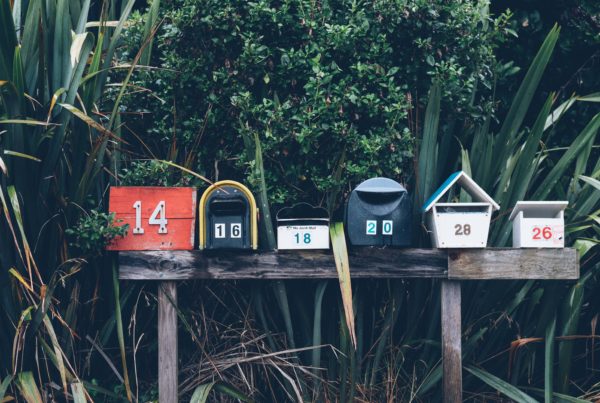Does it seem that mailing should be simple? It’s old technology, right? To many, printing a direct mail piece and getting it to the recipients appears to be a low tech, low risk process that requires little expertise. That’s a dangerous assumption.
Underestimating the complexity of high volume mail projects can turn profitable campaigns into losing propositions. Infrequent mailers and marketers with limited direct mail experience can inadvertently make decisions about designs, processes, and data that will increase their production and postage costs, depress their results, or both.
Postal rates and regulations change over time. If you haven’t produced a mailing in a while it pays to consult with experts in the early planning stages of your project. They will know how current postage rates and mail preparation rules will affect your proposed project. Don’t wait until you’re ready to turn the project over to production to get mailing advice.
The list below includes some common mistakes people make with mailing projects. Avoid these errors and your project is more likely to produce the results you expect within the budget you’ve established.
Mistake #1 – Mailing Lists
If the list isn’t right, the attractiveness of the offer won’t matter. About 40 million people move every year. Some of them file change of address notices with the US Postal Service, others do not. If you haven’t compared your list to the National Change of Address file recently, not only will mailing pieces be undeliverable, you could incur extra postage fees long after the mail has been delivered-a penalty for using out-of-date lists. Tracking down new addresses for people who move and don’t register with the USPS requires mailers to process files against alternative data sources. Check with your mailing service provider to see if they offer this service.
Besides the basic problem of poor data quality, inaccurate targeting can also kill the effectiveness of a mailing. Be sure the names on the list match the offer demographics. The days of selecting prospects solely by zip codes ended long ago. List vendors can help you get much more specific.
Don’t forget to remove names that have zero chances of responding to your offer. Use suppression criteria to strike deceased and incarcerated persons. Drop existing customers from your new customer acquisition campaigns. Delete prospects living outside your market area.
Mistake #2 – Duplicates
Closely related to mailing list problems are duplicate records. Duplicates usually happen when marketers access data from multiple sources. Data stored in different files may list the same individuals with variations in name spelling or with multiple addresses. Make sure your mail services provider has the tools to remove duplicates from the data files.
Duplicate definitions can change depending on the application. Sometimes, sending mail to multiple family members at the same address is appropriate. In other cases, it’s better to drop those duplicates and mail one piece to the household.
Duplicate mailpieces are 100% waste. They reduce the ROI of marketing campaigns. Get rid of them before sending data files to the printer or ask your print/mail services vendor to eliminate duplicates for you.
Mistake #3 – Mailpiece Design
The US Postal Service establishes specific criteria to define mail classes, services, and rates. Mailers that exceed the limits can incur expensive surcharges or force their mail into higher postage rate categories.
The USPS aspect ratio regulation is one area easily overlooked. Divide the mailpiece length by the height. If the result is less than 1.3 or greater than 2.5 the Post Office will assess a non-machineable surcharge to every mailpiece. The length of the piece is parallel to the address, so rotating the address to print parallel to the short side of the piece will trigger the surcharge. So will square mailpieces, which have an aspect ratio of 1.
Other design issues that cause mailers to pay extra fees include exceeding weight limits, overly stiff material, and uneven envelope contents such as pens or keys.
Self-mailers have their own set of mailing requirements including how they are constructed and sealed. If using adhesive wafers (tabs) to seal a folded self-mailer, be sure the tabs won’t obscure important information printed on the mailpiece. Tab locations are controlled by USPS regulations.
Each mail class has standards. Check with your print/mail vendor’s mailing experts or with Mailpiece Design Analysts (MDA’s) at the Post Office before producing questionable mailpieces.
Mistake #4 – Mailing Only Once
Time and repetition are necessary to create a lasting impression. Mailers are better off planning a sequence of mailings than blowing the whole budget on one extravagant mailpiece.
Multi-channel campaigns also perform better than mail alone. Talk with mail service providers about integrating email, text (SMS), or re-targeted web ads to boost the results generated by a direct mail project.
Mailed communications are more effective than digital alternatives, but they also require a greater investment. It pays to enlist the help of mailing experts as you plan your campaign to avoid making costly mistakes.
To access mailing assistance for your next project, contact us today! We will connect you with the proper resources.
Want a helpful marketing guide?
Our helpful marketing guide will be mailed to you for FREE.
Get a Free Marketing Guide








